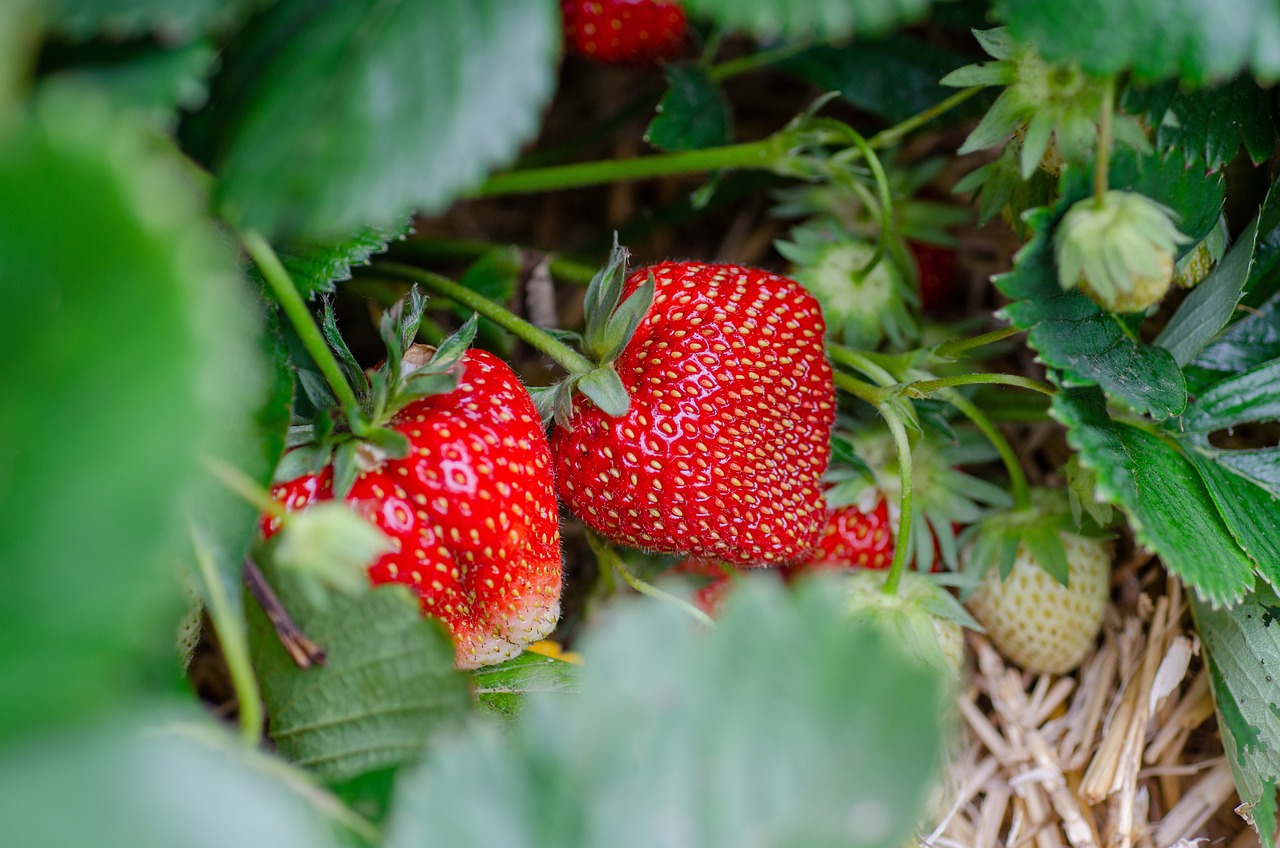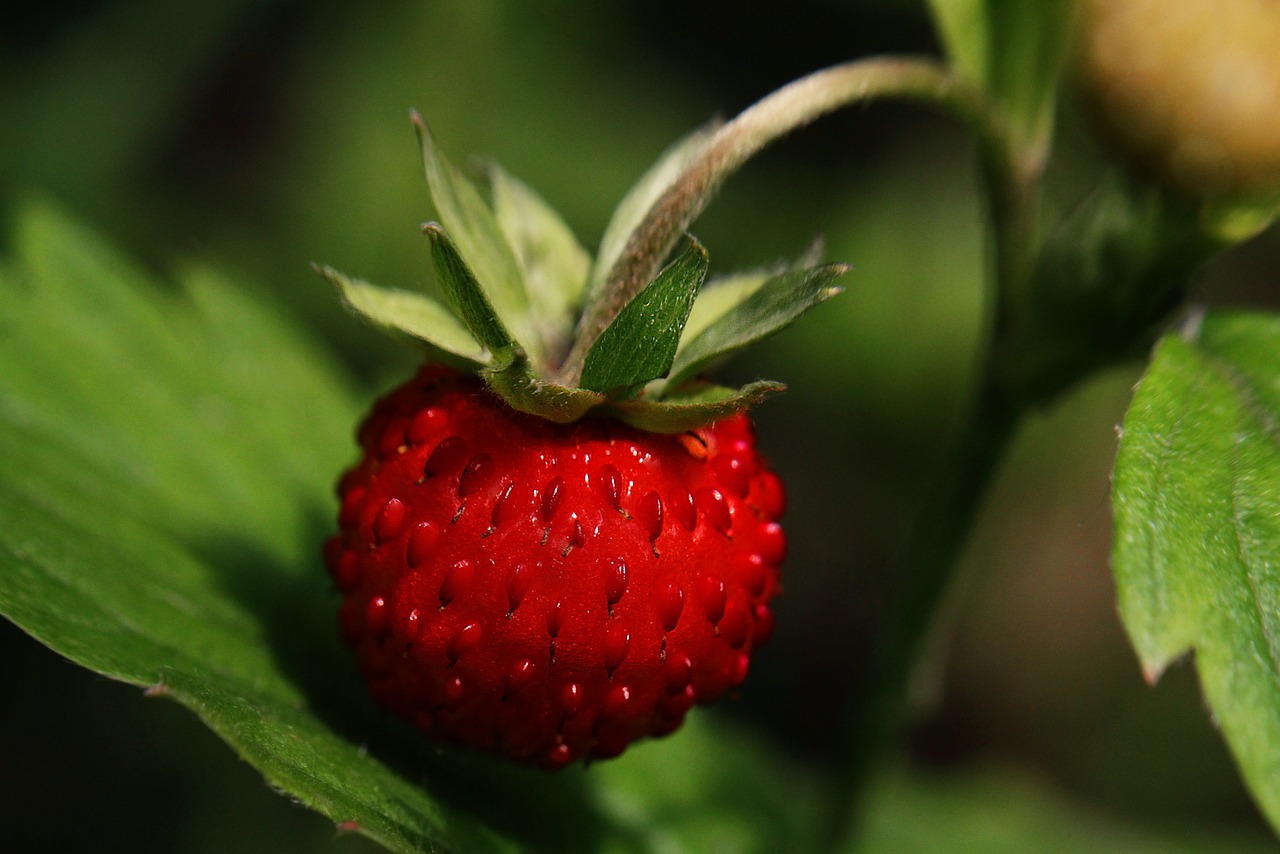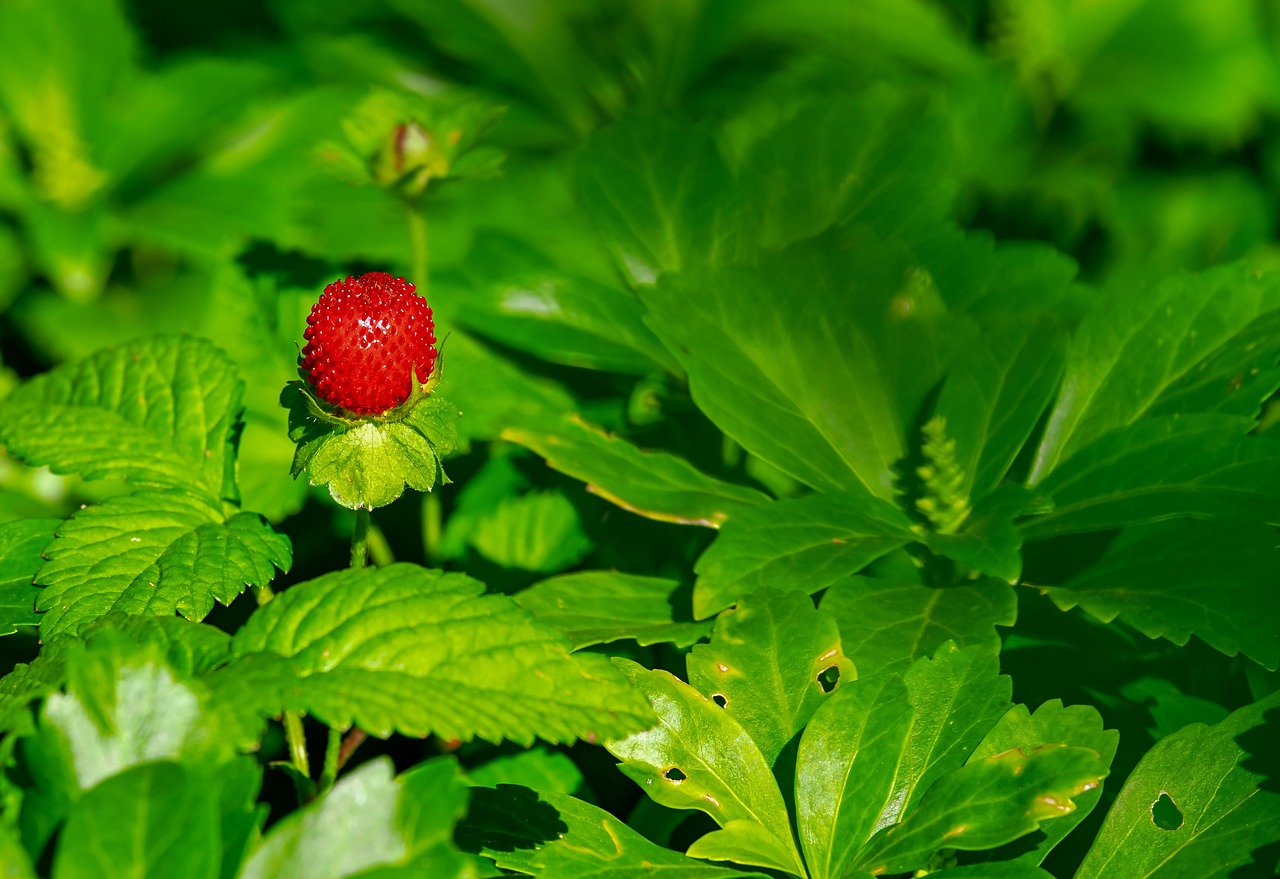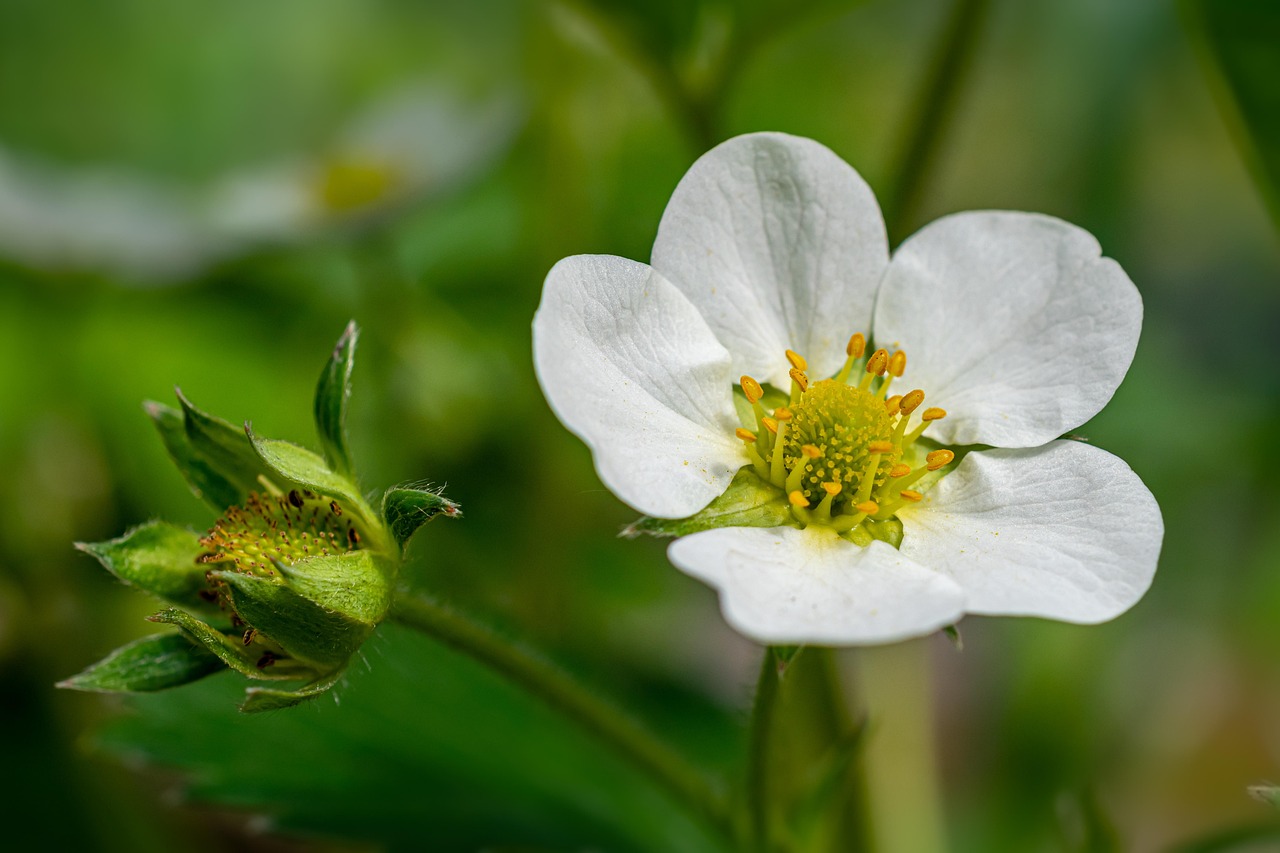To protect strawberry plants during winter, it is essential to cover them with mulch. A layer of straw, leaves, or pine needles can insulate the roots from freezing temperatures. Additionally, consider trimming the plants and ensuring proper drainage to prevent waterlogging.
Understanding Overwintering for Strawberry Plants

Strawberries are perennial plants that can thrive for several years if properly cared for. However, their survival during winter months is crucial for a bountiful harvest in the spring. Overwintering involves protecting the plants from harsh winter conditions that can damage or kill them. Factors such as temperature fluctuations, frost, and heavy snowfall can pose significant risks. Therefore, gardeners must take proactive steps to ensure their strawberry plants remain healthy throughout the colder months.
Different strawberry varieties have varying levels of cold hardiness. For instance, June-bearing strawberries typically require more protection than day-neutral varieties. Understanding the specific needs of your strawberry plants can help in selecting the appropriate overwintering methods. The timing and techniques used for overwintering can significantly impact the plants’ overall health and productivity in the following growing season.
Factors to Consider When Overwintering Strawberries
Several factors influence how you should prepare your strawberry plants for winter. Key considerations include:
- Climate: The severity of winter weather in your area plays a crucial role in determining the necessary protection measures.
- Variety: Some strawberry varieties are more resilient than others. Knowing which type you have helps tailor your overwintering strategy.
- Soil Quality: Well-drained soil can prevent root rot and other issues during winter.
Proper Timing for Overwintering
Timing is essential for effective overwintering. It is typically recommended to prepare strawberry plants for winter after the first hard frost but before consistent freezing temperatures set in. This ensures that the plants have enough time to acclimatize while still retaining moisture in the soil.
As temperatures drop, monitor weather forecasts closely. Ideally, you want to apply protective measures before temperatures fall below 20°F (-6°C). This timing helps reduce stress on the plants and allows them to enter dormancy naturally.
Methods for Protecting Strawberry Plants
There are various methods to protect strawberry plants during winter. Below are some effective strategies:
- Mulching: Applying a thick layer of mulch (about 3-4 inches) around the base of the plants can create insulation and protect against harsh winds.
- Covering: Using row covers or frost blankets can provide additional warmth and protection from frost.
- Pruning: Trimming back dead or damaged leaves can help prevent disease and promote healthier growth in spring.
- Watering: Ensuring that plants are well-watered before the ground freezes can help them survive dry winter conditions.
Understanding Soil and Drainage
The quality of soil and proper drainage are critical aspects of overwintering strawberries. Soil that retains too much moisture can lead to root rot, especially during cold winter months when evaporation is minimal. To maintain healthy soil conditions:
- Ensure soil is well-drained by incorporating organic matter.
- Avoid planting strawberries in low-lying areas where water tends to pool.
- Consider raised beds to improve drainage and soil quality.
By taking these factors into account and employing effective overwintering strategies, you can significantly improve the chances of your strawberry plants thriving through winter and yielding a fruitful harvest come spring. The next section will delve deeper into specific techniques and tips for successful overwintering. Stay tuned for more insights on this essential gardening practice.
Techniques for Effective Mulching
Mulching is one of the most effective ways to protect strawberry plants during winter. It provides insulation against cold temperatures, retains moisture, and suppresses weeds. However, not all mulching materials are created equal. Understanding the best practices for mulching can enhance your strawberry plants’ winter resilience.
Selecting Mulch Material
There are several types of materials you can use for mulching strawberry plants. Each has its own benefits:
- Straw: This is one of the most common mulching materials for strawberries. It is lightweight, provides excellent insulation, and allows water to penetrate easily.
- Pine Needles: Pine needles offer good insulation and help maintain an acidic soil pH, which is beneficial for strawberries.
- Wood Chips: While they provide good insulation, wood chips decompose slowly and may not retain warmth as effectively as straw or leaves.
- Shredded Leaves: Easily available in the fall, shredded leaves can decompose over time, enriching the soil as well.
Applying Mulch Properly
The application of mulch is critical to its effectiveness. Here are some guidelines:
- Timing: Apply mulch after the first hard frost but before significant snowfall. This timing helps trap heat while protecting the plants.
- Thickness: A thickness of 3 to 4 inches is ideal. This layer is thick enough to provide insulation but not so thick that it suffocates the plants.
- Coverage: Make sure to cover the entire root zone of the strawberry plants, extending a few inches beyond the plant base.
Row Covers and Frost Blankets

Another effective method for protecting strawberry plants during winter is using row covers or frost blankets. These lightweight fabrics provide an additional layer of protection against freezing temperatures and harsh winds.
Benefits of Row Covers
Row covers have several advantages, including:
- Temperature Regulation: They help maintain a warmer microclimate around the plants, reducing the risk of frost damage.
- Moisture Retention: Row covers prevent moisture loss from soil, which is vital for plant health during winter.
- Pest Protection: They can also shield plants from pests and animals that may seek shelter in your garden.
How to Use Row Covers Effectively
Using row covers requires some consideration to maximize their benefits:
- Material Choice: Select lightweight fabric that allows sunlight and moisture to penetrate while providing protection from frost.
- Securing the Covers: Use stakes or weights to secure the edges of the covers against wind. Ensure they are not too tight, as air circulation is necessary.
- Monitoring Conditions: Check weather forecasts and remove the covers during warmer days when temperatures rise significantly to prevent overheating.
Watering Strategy Before Winter
A proper watering strategy before winter sets in is essential for the health of strawberry plants. Adequate moisture allows them to enter dormancy without stress.
Key Watering Tips
- Irrigation Schedule: Water thoroughly in late fall, ensuring that the soil is moist but not waterlogged before the ground freezes.
- Avoid Late Watering: Do not water too close to freezing temperatures. Ideally, stop watering a few weeks before the first frost.
- Soil Check: Always check soil moisture levels before watering. A simple finger test can determine if the soil feels dry at a depth of about two inches.
By employing these techniques, you will effectively prepare your strawberry plants for the challenges of winter. Understanding and executing proper mulching, using row covers, and having a well-planned watering strategy are key components in ensuring your strawberries thrive through winter and flourish in spring.

Preparing Your Strawberry Plants for Spring
As winter progresses, it is essential to think ahead about how to prepare your strawberry plants for spring. Proper care during the late winter months can set the stage for a productive growing season. This includes monitoring the conditions of your plants and making necessary adjustments as the weather begins to warm.
Monitoring Winter Conditions
Keeping an eye on winter conditions is vital for successful overwintering. Weather patterns can vary significantly, impacting how you care for your strawberry plants. Here are some factors to monitor:
- Temperature Fluctuations: Sudden temperature changes can cause plants to break dormancy prematurely. This may lead to damage if subsequent frosts occur.
- Snow Cover: A layer of snow can act as an insulator for strawberry plants. If snow is sparse, consider adding additional mulch to help maintain warmth.
- Moisture Levels: Check soil moisture occasionally, especially during dry spells. Maintaining adequate moisture without overwatering is essential.
Removing Mulch in Spring
As the threat of frost diminishes and temperatures begin to rise, it is time to remove the mulch. This process should be done gradually to avoid shocking the plants:
- Timing: Wait until the soil starts to warm up, usually around late March or early April, depending on your climate.
- Gradual Removal: Start by pulling back some of the mulch to allow sunlight and air circulation to reach the plants.
- Full Removal: Once the risk of frost has passed, remove all mulch materials completely to promote growth.
Fertilization and Soil Health

As strawberries emerge from dormancy, they will benefit from proper fertilization and soil health practices. Providing the right nutrients will enhance growth and fruit production.
Selecting Fertilizers
Choosing the correct fertilizer is critical for strawberry plants. Look for a balanced fertilizer that provides essential nutrients:
- Nitrogen: Promotes healthy leaf growth.
- Phosphorus: Supports root development and flowering.
- Potassium: Enhances fruit quality and resistance to diseases.
Application Tips
When applying fertilizer, consider these best practices:
- Timing: Fertilize in early spring when plants begin to show new growth.
- Method: Apply fertilizer evenly around the base of each plant, avoiding direct contact with the leaves.
- Watering: Follow up with a thorough watering after fertilization to help nutrients reach the roots.
Pest and Disease Management
As spring arrives, so do potential pests and diseases that can threaten strawberry plants. Being proactive in managing these risks is crucial for a healthy crop.
Common Pests
Some common pests that affect strawberries include:
- Spider Mites: These tiny pests can cause leaf discoloration and damage.
- Aphids: Known for sucking sap from plants, they can weaken strawberry plants significantly.
- Slugs and Snails: They can create holes in leaves and stems, leading to further damage.
Disease Prevention Strategies
To prevent diseases such as powdery mildew or root rot, consider these strategies:
- Good Air Circulation: Ensure proper spacing between plants to allow air flow, reducing humidity levels that foster disease.
- Cultural Practices: Rotate crops regularly and practice good sanitation by removing any dead or diseased plant material.
- Pesticides: Use organic or chemical pesticides as a last resort if pest problems become severe.
Caring for strawberry plants during winter and preparing them for spring is an ongoing process. By implementing these practices, you can foster a thriving environment for your strawberries, ultimately leading to a successful harvest in the warmer months ahead. The next section will delve into additional tips and considerations for ensuring your strawberry plants remain healthy throughout their growing cycle.
Additional Considerations for Overwintering Strawberries
In addition to the previously discussed techniques, there are several other considerations that can enhance the success of overwintering strawberry plants. These factors will help ensure that your strawberries remain healthy and productive throughout their growing cycle.
Choosing the Right Location
The location of your strawberry plants can significantly affect their ability to withstand winter conditions. Factors to consider include:
- Sunlight Exposure: Choose a location that receives full sunlight for most of the day. Adequate light helps keep the plants warmer and promotes healthy growth.
- Wind Protection: Plant strawberries in areas shielded from harsh winds. Natural barriers, such as fences or shrubs, can help minimize wind exposure and reduce the risk of frost damage.
- Elevation: Higher elevations tend to have better drainage and less frost accumulation compared to low-lying areas.
Using Cold Frames
If you live in an area with particularly harsh winters, consider using cold frames or hoop houses to protect your strawberry plants. These structures create a microclimate that can significantly enhance winter survival:
- Temperature Control: Cold frames maintain warmer temperatures around the plants, reducing the risk of freezing.
- Moisture Regulation: They prevent excessive moisture loss while ensuring adequate airflow.
- Easier Access: Cold frames allow for easy access to the plants for monitoring and maintenance during winter.
Assessing Plant Health in Spring
As spring approaches, it is crucial to assess the health of your strawberry plants. Look for signs of new growth and any damage that may have occurred during winter. Here are some steps to take:
- Inspect Leaves: Check for healthy green leaves. Yellowing or browning leaves may indicate frost damage or disease.
- Check Roots: Gently remove some soil around the base of plants to inspect roots. Healthy roots should be firm and white, while mushy or black roots indicate rot.
- Evaluate Flower Buds: Look for flower buds forming on the plants, as this signals that they are ready to produce fruit.
Final Thoughts
Overwintering strawberry plants effectively requires a combination of techniques and strategies aimed at protecting them from winter’s challenges. By understanding the needs of your strawberry plants and implementing practices such as proper mulching, effective watering, and pest management, you can promote their health and vigor.
Remember that each variety of strawberry may require different care, and local climate conditions can greatly influence your approach. As you prepare for spring, keep an eye on environmental factors, assess plant health, and be ready to adapt your strategies as needed.
With dedication and care, your strawberry plants will not only survive the winter but thrive in the growing season ahead, providing delicious berries that you can enjoy fresh from your garden. Happy gardening!
